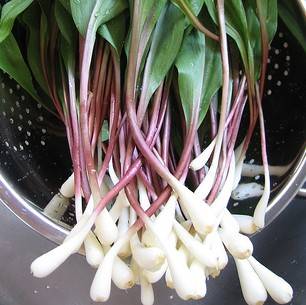 Mac and cheese, tomato soup, mashed potatoes… the power of food to comfort us is well known. Likewise when the smell of cookies, apple pie, or bread is involved, people find themselves more willing to give an overpriced house a second look.
Mac and cheese, tomato soup, mashed potatoes… the power of food to comfort us is well known. Likewise when the smell of cookies, apple pie, or bread is involved, people find themselves more willing to give an overpriced house a second look.
For years we’ve heard about food’s ability to protect us from disease only to be repeatedly let down whether it was the cholesterol lowering benefits of oat bran or the vision protecting power of lutein in carrots and kale. Oat bran met its downfall when it was revealed that study participants already ate 50 percent more fiber than average Americans, and lutein stumbled in studies of macular degeneration in twins.
So can food really heal? This was the question my science writer colleague, Dan, and I pondered a few weeks ago when we discussed Traditional Chinese Medicine over lunch.
Both acupuncture and TCM dietary recommendations hold up at some levels to Western scientific scrutiny. The meridians used in acupuncture tend to be along major neural pathways. Similarly, TCM dietary recommendations often eliminate foods that have been shown by Western medical studies to cause inflammation: refined flour, sugar, fatty foods. But not all acupuncture points match up and it seems odd from a western perspective that greens of the amaranth and mustard families would be conducive to healing a certain condition while greens in the spinach family would not. And yet Dan and I were both aware of several individuals who had benefited from TCM.
I saw the benefits of TCM first hand seven years ago when I was contemplating having my cat put down. After a year of steroids, she was no longer eating or playing due to irritable bowel disease. On a friend’s recommendation, I took the cat to a local TCM vet. We overhauled the cat’s diet and slowly reintroduced foods only to discover that the cat could not tolerate the ingredients that comprise most commercial pet food. Proteins like lamb, beef, chicken, eggs, and dairy all resulted in vomiting. However, turkey and pork did not. The vet also prescribed Chinese herbal pills for the cat. After six months, I took the cat to her former vet who did not recognize her. It has now been eight years and the cat is not only alive, but thriving. I have tried to wean her from the pills, but each time, her symptoms return.
I do not understand TCM and have been reluctant to try it on myself. After all, what is eating a TCM diet going to do for a deep rotator cuff tear? But Thursday I found myself ravenously hungry in the grocery store. For some reason, I walked past an entire produce section and a cooler of sushi to grab a package of chicken gizzards and a blue green algae beverage. Yeah, it makes me nauseous thinking about it, too. But, sure enough when I got home and checked the list of foods that TCM advises for chronic shoulder injuries, there they were. And there on the list of foods to avoid were most of the foods that I had been eating for the last four months: dairy, peanut butter, tofu, cabbage, spinach, red meat.
On Sunday morning, I decided to put TCM to the test. The test was anything but fair. I was coming off a couple of near all nighters (not that my shoulder has allowed me to measurably sleep for several weeks) and a cheeseburger at Gross’ in Danville. Plus, I was going to be spending the next five hours in wind, rain, and cold volunteering at Wild Card Cycling’s time trial in Tolono. If it wasn’t a recipe for inflammation, I didn’t know what was. But after five hours including lugging around a vintage P.A. system, my shoulder didn’t hurt. It didn’t hurt after I slept on it for three hours Sunday afternoon. And, it didn’t hurt after my rehab exercises on Monday.
Maybe it’s a placebo effect, but so far, stir fries of chicken, ramps, and tatsoi from the farmers market are doing what fistfuls of ibuprofen could not.








